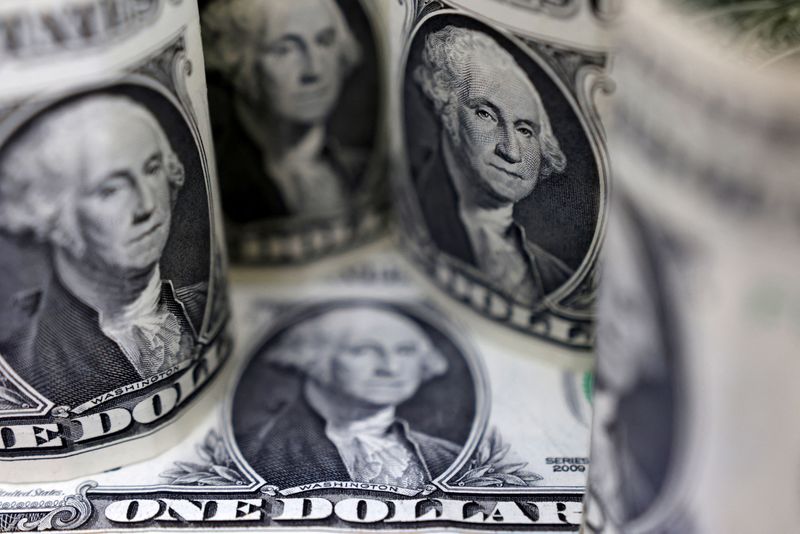By Joice Alves and Brigid Riley
LONDON/TOKYO (Reuters) -The U.S. dollar index held steady on Wednesday as traders shrugged off hotter-than-expected U.S. inflation and still expected a Federal Reserve interest rate cut in June.
The U.S. consumer price index (CPI) increased solidly in February, beating forecasts and suggesting some stickiness in inflation.
Although the CPI rose 0.4% in February in line with forecasts, a 3.2% year-on-year gain came in just ahead of an expected 3.1% increase. Core figures also topped estimates.
Markets see little chance of a Fed cut before the summer, but expectations for rate cuts in June have eased only a touch to about a 67% likelihood versus 71% earlier in the week, according to the CME Group's (NASDAQ:CME) FedWatch Tool.
The dollar index, which measures the greenback against a basket of peer currencies and recorded its biggest weekly decline since mid December, was 0.01% lower at 102.92.
"The market reaction has been very contained compared to a month ago when inflation surprised by a similar margin," said Francesco Pesole, FX strategist at ING.
"It appears that the optimistic message on disinflation sent by Federal Reserve Chair Jerome Powell continues to resonate loudly with investors."
Last week, Powell said the U.S. central bank was "not far" from gaining the confidence it needs in falling inflation to begin cutting rates.
Sterling edged 0.1% higher to $1.2799 as data showed Britain's economy returned to growth in January after entering a shallow recession in the second half of 2023.
The euro was also 0.1% higher against the dollar at $1.0937.
According to the results of a long-awaited European Central Bank framework review, the ECB wants to wean banks off free cash but it will try to do that at a gentle enough pace not to disrupt the financial system or credit creation.
ECB policymaker Francois Villeroy de Galhau said the ECB would probably start cutting rates during the spring, between April and June 21, as "victory" against inflation was in sight.
In the meantime, data showed higher cost of borrowing is denting the euro zone economy, with industrial production decreasing by 3.2% in January from the previous month.
Elsewhere, the dollar was 0.2% higher against the yen at 147.92, after the Japanese currency saw its biggest fall in a month on Tuesday following Bank of Japan Governor Kazuo Ueda's slightly bleaker assessment of the nation's economy.
Traders are now looking to the initial estimates of spring wage negotiations to be announced on Friday. The results will be crucial for the BOJ's policy calculations on whether to exit negative interest rates at its meeting on March 18-19.
Expectations are for bumper pay raises, with a number of Japan's biggest companies already saying they had agreed to fully meet union demands for pay increases.
The country's largest trade union confederation has demanded pay rises of 5.85% this year, surpassing 5% for the first time in 30 years.

In cryptocurrencies, bitcoin hit a fresh record high of $73,678. It was last up 2.7% to $73,000.
Ether was up 2.1% at $4,032.